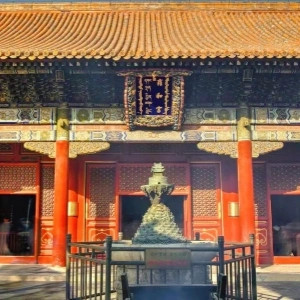Travel through thousands of years on the ancient Silk Road and experience the once prosperous trade routes and unique cultures. Let's start from Xi'an, follow the footsteps of the Silk Road and explore the sparkling treasures in this long river of history.
If you want to know more about Silk Road and itineraries, please contact us.
Xi'an to Dunhuang Silk Road Tour
Legendary Silk Road Tour from Beijing
Xi'an, as the starting point of the ancient Silk Road, attracts countless tourists with its deep historical heritage and magnificent monuments. When you walk into Xi'an, the first thing that catches your eye is the Terracotta Warriors and Horses, a breathtaking underground army known as the eighth wonder of the world. The Terracotta Warriors are not only the guardians of the Mausoleum of Qin Shi Huang, but also a true reflection of the ancient Chinese military system. Each Terracotta Warrior is unique, showcasing the mastery of ancient craftsmanship and exquisite carving of details. Next, stroll to the Big Wild Goose Pagoda, a Buddhist pagoda built in the Tang Dynasty, which not only witnessed cultural exchanges on the Silk Road, but also serves as a monument to the ancient scribe, Venerable Xuanzang, who returned from his quest for scriptures. The architectural style of the Big Wild Goose Pagoda is a blend of the essence of ancient Chinese architectural art, the tower is upright and dignified, and from afar it seems to be a holy pagoda pointing straight up to the sky. In addition, the Ancient City Wall of Xi'an, a well-preserved ancient city wall, demonstrates the great conception of ancient fortifications. Strolling along the wall, you can overlook the panoramic view of downtown Xi'an, where the heaviness of history meets the bustling scene of modern times.
Leaving Xi'an, our trail led us to Zhangye. Zhangye, a city located in Gansu Province, is home to the stunning seven-color Danxia landform. This colorful mountain range, like nature's palette of colorful rocks layered as if a flowing scroll, attracts countless photographers and nature explorers. Under the sunlight, the mountains are even more colorful, just like a fairyland on earth. In addition to natural wonders, Zhangye Great Buddha Temple, as an important religious shrine on the Silk Road, witnesses the mingling and inheritance of Eastern and Western cultures with its magnificent Buddha statues and ancient temple buildings. The murals and carvings inside the temple are delicate and vivid, recording the grandeur of ancient religious and trade activities.
Continuing our journey, we came to Dunhuang. Dunhuang, as a bright pearl on the Silk Road, is famous for its Mogao Caves. Inside the Mogao Caves, the murals and colorful sculptures are exquisite, recording the history of the introduction of Buddhism from India to China, and at the same time, it is also a witness to the cultural convergence of the countries on the ancient Silk Road. Each mural is like a flowing scroll of history, telling ancient myths and historical legends. In addition to the Mogao Grottoes, the Mingsha Mountain and the Crescent Spring are also wonders of Dunhuang. The sand dunes of the Mingsha Mountain sound like musical instruments in the wind, a natural musical phenomenon that brings a refreshing experience to visitors. The Crescent Spring, on the other hand, is like a bright moon quietly set in the desert, and the clear spring water contrasts sharply with the sand dunes, as if it were an oasis in the desert, which is refreshing and invigorating.
In the hinterland of the Silk Road, we arrived in Hami. Hami, famous for its unique cantaloupe, the sweet fruit represents the vitality and hope of this arid land. Here, the Uyghur culture becomes another fascinating highlight. Strolling through the Old City of Hami, you will find traces of history mingling with modern life, and the streets, alleys and markets of the old city seem to tell of past glories. The traditional customs and cuisine of the Uyghur people give the city a unique and exotic flavor, and the aroma of the streets and alleys fills the air as if inviting you to explore more of the delicacies and culture.
Finally, we arrived in Turpan. Turpan, located under the Flaming Mountains in western China, is known for its unique Flaming Mountains and ancient qanats system. The Flaming Mountains are named for the red rocks on their surface and the scorching heat of the climate, while the qaner wells are a masterpiece of ancient engineering that provided water and transformed the agricultural landscape of the region. Walking through the streets of Turpan, you can feel the atmosphere of ancient trade and prosperity, as well as experience the unique flavor of this hot land. At sunset in the Flaming Mountains, the afterglow pours over the red mountains, as if coloring the whole mountain range in fiery red, forming a beautiful natural picture.
This ancient Silk Road is not only a link of cultural exchanges between the East and the West in ancient times, but also a valuable heritage for us to explore history and culture today. From Xi'an to Turpan, every step is full of legends and stories, and every attraction unites the splendor of history. During this journey, you will experience the ancient trade routes and colorful cultures on the Silk Road, as if you have traveled through a thousand years and come into close contact with those glorious past. Every corner, every landscape, is a shining treasure in this long river of history, let us feel the charm and splendor of the Silk Road in this journey.
Related Posts
Create Your Customized Trip
Take about 2 minutes to fill the form to tell us how you like to travel, and get a reply within 1 working day.









